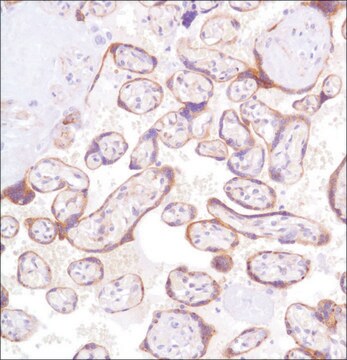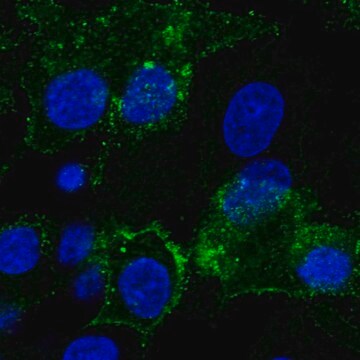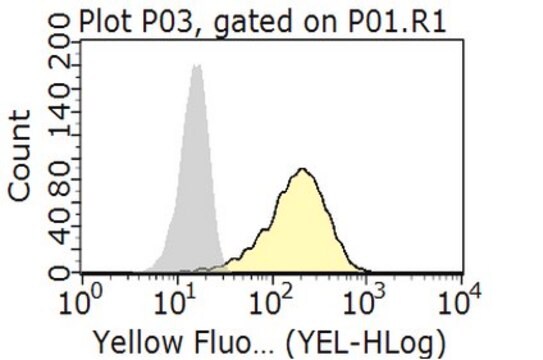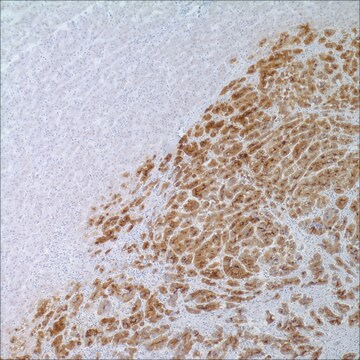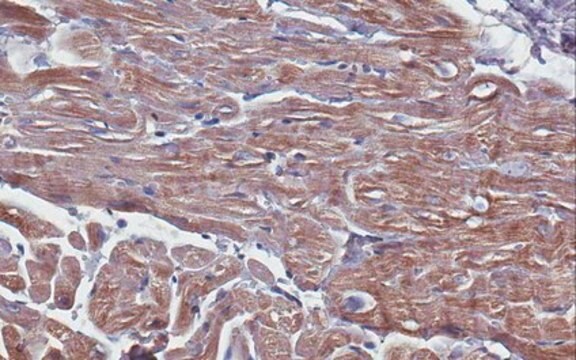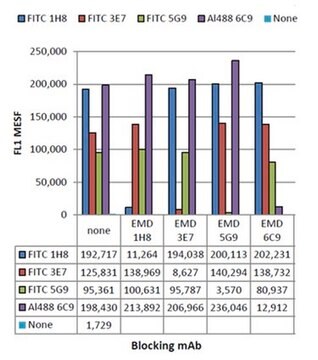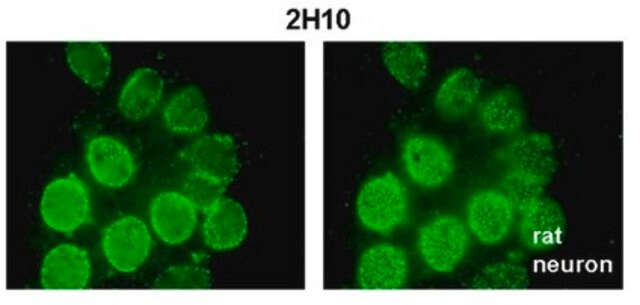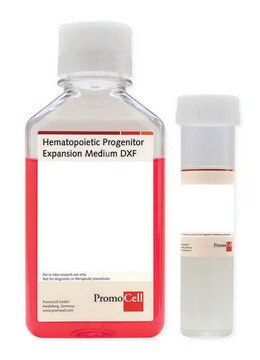MABC667
Anti-GPC3 Antibody, clone 9C2
ascites fluid, clone 9C2, from mouse
Sinonimo/i:
SGB, DGSX, MXR7, SDYS, SGBS, OCI-5, SGBS1, GTR2-2, Glypican-3, Intestinal protein OCI-5
About This Item
Prodotti consigliati
Origine biologica
mouse
Livello qualitativo
Forma dell’anticorpo
ascites fluid
Tipo di anticorpo
primary antibodies
Clone
9C2, monoclonal
Reattività contro le specie
mouse, human
tecniche
flow cytometry: suitable
immunofluorescence: suitable
immunohistochemistry: suitable
western blot: suitable
Isotipo
IgG1
N° accesso UniProt
Condizioni di spedizione
wet ice
modifica post-traduzionali bersaglio
unmodified
Informazioni sul gene
human ... GPC3(2719)
Descrizione generale
Immunogeno
Applicazioni
Immunofluorescence Analysis: A 1:200-1,000 dilution from a representative lot detected GPC3 in HeLa cells.
Flow Cytometry Analysis: A 1:200-400 dilution from a representative lot detected GPC3 in Jurkat cells.
Optimal working dilutions must be determined by end user.
Apoptosis & Cancer
Apoptosis - Additional
Qualità
Western Blotting Analysis: A 1:500-2,000 dilution of this antibody detected GPC3 in mouse liver, HepG2, HEK293, Jurkat, SK-N-SH, PC-12, and F9 cell lysates.
Descrizione del bersaglio
Stato fisico
Stoccaggio e stabilità
Risultati analitici
Mouse liver, HepG2, HEK293, Jurkat, SK-N-SH, PC-12, and F9 cell lysates
Esclusione di responsabilità
Non trovi il prodotto giusto?
Prova il nostro Motore di ricerca dei prodotti.
Avvertenze
Danger
Indicazioni di pericolo
Consigli di prudenza
Classi di pericolo
Aquatic Chronic 3 - Repr. 1A
Classe di pericolosità dell'acqua (WGK)
WGK 2
Punto d’infiammabilità (°F)
Not applicable
Punto d’infiammabilità (°C)
Not applicable
Elenchi normativi
Forniamo informazioni su eventuali restrizioni prevalentemente per i prodotti chimici. Per altre tipologie di prodotto siamo in grado di fornire soltanto informazioni limitate. Nessuna segnalazione significa che nessuno dei componenti è citato in un elenco. È dovere dell’utilizzatore assicurarsi che il prodotto venga impiegato in maniera sicura e a norme di legge.
Certificati d'analisi (COA)
Cerca il Certificati d'analisi (COA) digitando il numero di lotto/batch corrispondente. I numeri di lotto o di batch sono stampati sull'etichetta dei prodotti dopo la parola ‘Lotto’ o ‘Batch’.
Possiedi già questo prodotto?
I documenti relativi ai prodotti acquistati recentemente sono disponibili nell’Archivio dei documenti.
Il team dei nostri ricercatori vanta grande esperienza in tutte le aree della ricerca quali Life Science, scienza dei materiali, sintesi chimica, cromatografia, discipline analitiche, ecc..
Contatta l'Assistenza Tecnica.